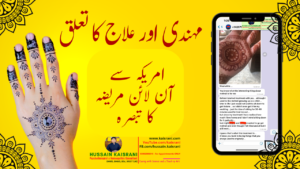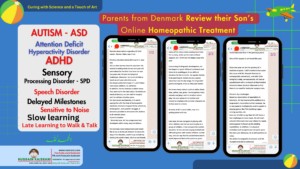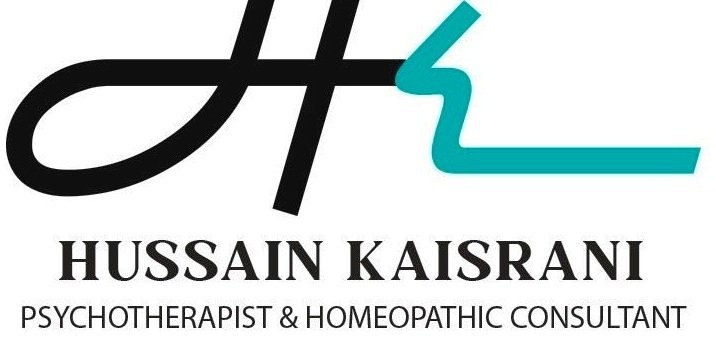Muscular dystrophy refers to a group of genetic, hereditary muscle diseases that cause progressive muscle weakness.[1][2] Muscular dystrophies are characterized by progressive skeletal muscle weakness, defects in muscle proteins, and the death of muscle cells and tissue.[3] Nine diseases including Duchenne, Becker, limb girdle, congenital, facioscapulohumeral, myotonic, oculopharyngeal, distal, and Emery-Dreifuss are always classified as muscular dystrophy[4] but there are more than 100 diseases in total with similarities to muscular dystrophy. Most types of MD are multi-system disorders with manifestations in body systems including the heart, gastrointestinal and nervous systems, endocrine glands, skin, eyes and other organs.[4]
History
The first historical account of muscular dystrophy appeared in 1830, when Sir Charles Bell wrote an essay about an illness that caused progressive weakness in boys. Six years later, another scientist reported on two brothers who developed generalized weakness, muscle damage, and replacement of damaged muscle tissue with fat and connective tissue. At that time the symptoms were thought to be signs of tuberculosis.
In the 1850s, descriptions of boys who grew progressively weaker, lost the ability to walk, and died at an early age became more prominent in medical journals. In the following decade, French neurologist Guillaume Duchenne gave a comprehensive account of 13 boys with the most common and severe form of the disease (which now carries his name — Duchenne muscular dystrophy). It soon became evident that the disease had more than one form, and that these diseases affected people of either sex and of all ages.
Genetic cause of Muscular dystrophy
These conditions are inherited, and the different muscular dystrophies follow various inheritance patterns. The best-known type, Duchenne muscular dystrophy (DMD), is inherited in an X-linked recessive pattern, meaning that the mutated gene that causes the disorder is located on the X chromosome, one of the two sex chromosomes, and is thus considered sex-linked. In males (who have only one X chromosome), one altered copy of the gene in each cell is sufficient to cause the condition. In females (who have two X chromosomes), a mutation must generally be present in both copies of the gene to cause the disorder (relatively rare exceptions, manifesting carriers, do occur due to dosage compensation/X-inactivation). Males are therefore affected by X-linked recessive disorders much more often than females. A characteristic of X-linked inheritance is that fathers cannot pass X-linked traits to their sons. In about two thirds of DMD cases, an affected male inherits the mutation from a mother who carries one altered copy of the DMD gene. The other one third of cases probably result from new mutations in the gene. Females who carry one copy of a DMD mutation may have some signs and symptoms related to the condition (such as muscle weakness and cramping), but these are typically milder than the signs and symptoms seen in affected males. Duchenne muscular dystrophy and Becker’s muscular dystrophy are caused by mutations of the gene for the dystrophin protein and lead to an overabundance of the enzyme creatine kinase.[5][6] The dystrophin gene is the largest gene in humans.[7]
Symptoms of Muscular dystrophy
Principal symptoms include:
- Progressive Muscular Wasting (weakness)
- Poor Balance
- Frequent Falls
- Walking Difficulty
- Waddling Gait
- Calf Pain
- Limited Range of Movement
- Muscle Contractures
- Respiratory Difficulty
- Drooping Eyelids (ptosis)
- Gonadal Atrophy
- Scoliosis (curvature of the spine)
- Inability to walk
Some types of Muscular Dystrophy can affect the heart, causing cardiomyopathy or arrhythmias.
Diagnosis for Muscular dystrophy
The diagnosis of muscular dystrophy is based on the results of a muscle biopsy. In some cases, a DNA blood test may be all that is needed.
A physical examination and the patient’s medical history will help the doctor determine the type of muscular dystrophy. Specific muscle groups are affected by different types of muscular dystrophy.
Often, there is a loss of muscle mass (wasting), which may be hard to see because some types of muscular dystrophy cause a build up of fat and connective tissue that makes the muscle appear larger. This is called pseudohypertrophy.
Prognosis
The prognosis for people with muscular dystrophy varies according to the type and progression of the disorder. Some cases may be mild and progress very slowly over a normal lifespan, while others produce severe muscle weakness, functional disability, and loss of the ability to walk. Some children with muscular dystrophy die in infancy while others live into adulthood with only moderate disability. The muscles affected vary, but can be around the pelvis, shoulder, face or elsewhere. Muscular dystrophy can affect adults, but the more severe forms tend to occur in early childhood.
Treatment of Muscular dystrophy
There is no known cure for muscular dystrophy. Inactivity (such as bed-rest and even sitting for long periods) can worsen the disease. Physical therapy, Occupational therapy, speech therapy and orthopedic instruments (e.g., wheelchairs, standing frames) may be helpful.
There is no specific treatment for any of the forms of muscular dystrophy. Physical therapy to prevent contractures (a condition when an individual with a muscular dystrophy grows and the muscles don’t move with the bones and can easily be slowed down and/or make the individual’s body straighter by daily physical therapy), orthoses (orthopedic appliances used for support) and corrective orthopedic surgery may be needed to improve the quality of life in some cases. The cardiac problems that occur with Emery-Dreifuss muscular dystrophy and myotonic muscular dystrophy may require a pacemaker. The myotonia (delayed relaxation of a muscle after a strong contraction) occurring in myotonic muscular dystrophy may be treated with medications such as quinine, phenytoin, or mexiletine but no actual long term treatment has been found.
Occupational therapy assists the individual with MD in engaging in his/her activities of daily living (self-feeding, self-care activities, etc) and leisure activities at the most independent level possible. This may be achieved with use of adapted equipment or the utilization of energy conservation techniques. Occupational therapy may also implement changes to a person’s environment, both at home or work, to increase the individual’s function and accessibility. Occupational therapists also address psychosocial changes and cognitive decline which may accompany MD as well as provide support and education about the disease to the family and individual ([8]).
Research Projects
A grid computing-based research project called “Help Cure Muscular Dystrophy” was launched on December 19, 2006 by Décrypthon. The Jain Foundation is involved in research into Miyoshi myopathy, a form of distal muscular dystrophy and LGMD2B, a limb-girdle muscular dystrophy.[9]
MY0-029
MYO-029 is an experimental myostatin inhibiting drug developed by Wyeth Pharmaceuticals for the treatment of muscular dystrophy. Myostatin is a protein that inhibits the growth of muscle tissue, MYO-029 is a recombinant human antibody designed to bind and inhibit the activity of myostatin. A 2005/2006 trial was completed by Wyeth in Collegeville, PA. As of April 2007, the results of the study have not yet been made public, but it is one of the few known drugs in development for the treatment for muscular dystrophy.
National research and support in the United States
Within the United States, the three primary federally funded organizations that focus on Muscular Dystrophy include the National Institute of Neurological Disorders and Stroke (NINDS), National Institute of Arthritis and Musculoskeletal and Skin Diseases (NIAMS), and National Institute of Child Health and Human Development (NICHD).[4]
In 1966, the Muscular Dystrophy Association began its annual Jerry Lewis MDA Telethon, which has arguably done more to raise awareness of muscular dystrophy than any other event or initiative.
On December 18, 2001 the MD CARE Act was signed into law and amends the Public Health Service Act to provide research for the various muscular dystrophies. This law also established the Muscular Dystrophy Coordinating Committee to help focus research efforts through a coherent research strategy.[10][11]
Homeopathy Treatment for Muscular dystrophy
Keywords: homeopathy, homeopathic, treatment, cure, remedy, remedies, medicine
Homeopathy treats the person as a whole. It means that homeopathic treatment focuses on the patient as a person, as well as his pathological condition. The homeopathic medicines are selected after a full individualizing examination and case-analysis, which includes the medical history of the patient, physical and mental constitution, family history, presenting symptoms, underlying pathology, possible causative factors etc. A miasmatic tendency (predisposition/susceptibility) is also often taken into account for the treatment of chronic conditions. A homeopathy doctor tries to treat more than just the presenting symptoms. The focus is usually on what caused the disease condition? Why ‘this patient’ is sick ‘this way’. The disease diagnosis is important but in homeopathy, the cause of disease is not just probed to the level of bacteria and viruses. Other factors like mental, emotional and physical stress that could predispose a person to illness are also looked for. No a days, even modern medicine also considers a large number of diseases as psychosomatic. The correct homeopathy remedy tries to correct this disease predisposition. The focus is not on curing the disease but to cure the person who is sick, to restore the health. If a disease pathology is not very advanced, homeopathy remedies do give a hope for cure but even in incurable cases, the quality of life can be greatly improved with homeopathic medicines.
The homeopathic remedies (medicines) given below indicate the therapeutic affinity but this is not a complete and definite guide to the homeopathy treatment of this condition. The symptoms listed against each homeopathic remedy may not be directly related to this disease because in homeopathy general symptoms and constitutional indications are also taken into account for selecting a remedy. To study any of the following remedies in more detail, please visit the Materia Medica section at hussainkaisrani.com.
None of these medicines should be taken without professional advice and guidance.
Homeopathy Remedies for Muscular dystrophy :
Caust., lath., plb.
Types of Muscular dystrophy
Becker’s muscular dystrophy
Becker muscular dystrophy (BMD) is a less severe variant of Duchenne muscular dystrophy and is caused by the production of a truncated, but partially functional form of dystrophin.[4]
Survival is usually into middle age. [12]
Congenital muscular dystrophy
Age at onset: birth; symptoms include general muscle weakness and possible joint deformities; disease progresses slowly; shortened life span.
Congenital muscular dystrophy includes several disorders with a range of symptoms. Muscle degeneration may be mild or severe. Problems may be restricted to skeletal muscle, or muscle degeneration may be pair with effects on the brain and other organ systems. A number of the forms of the congenital muscular dystrophies are caused by defects in proteins that are thought to have some relationship to the dystrophin-glycoprotein complex and to the connections between muscle cells and their surrounding cellular structure. Some forms of congenital muscular dystrophy show severe brain malformations, such as lissencephaly and hydrocephalus.[4]
Duchenne muscular dystrophy
Duchenne muscular dystrophy (DMD) is the most common childhood form of muscular dystrophy. DMD usually becomes clinically evident when a child begins walking. Patients typically require a wheelchair by age 10 to 12 and die in their late teens or early 20s. In the early 1990s, researchers identified the gene for the protein dystrophin which, when absent, causes DMD. The dystrophin gene is the largest known gene in humans. Since the gene is on the X-chromosome, this disorder affects primarily males. Females who are carriers have milder symptoms. Sporadic mutations in this gene occur frequently, accounting for a third of cases. The remaining two-thirds of cases are inherited in a recessive pattern. age at onset: two to six years; symptoms include general muscle weakness and wasting; affects pelvis, upper arms, and upper legs; eventually involves all voluntary muscles; survival beyond 20 years is rare.[4]
Dystrophin is part of a complex structure involving several other protein components. The “dystrophin-glycoprotein complex” helps anchor the structural skeleton within the muscle cells, through the outer membrane of each cell, to the tissue framework that surrounds each cell. Due to defects in this assembly, contraction of the muscle leads to disruption of the outer membrane of the muscle cells and eventual weakening and wasting of the muscle.[4]
Distal muscular dystrophy
Distal muscular dystrophies’ age at onset: 40 to 60 years; symptoms include weakness and wasting of muscles of the hands, forearms, and lower legs; progress is slow and not life-threatening.[12]
Miyoshi myopathy, one of the distal muscular dystrophies, causes initial weakness in the calf muscles, and is caused by defects in the same gene responsible for one form of [[LGMD] (Limb Girdle Muscular Dystrophy)].[4]
Emery-Dreifuss muscular dystrophy
Age at onset, childhood to early teens. Symptoms include weakness and wasting of shoulder, upper arm, and shin muscles; joint deformities are common; progress is slow; sudden death may occur from cardiac problems.[13]
Facioscapulohumeral muscular dystrophy
Facioscapulohumeral muscular dystrophy (FSHD) initially affects muscles of the face, shoulders, and upper arms with progressive weakness. Symptoms usually develop in the teenage years. Some affected individuals become severely disabled. The pattern of inheritance is autosomal dominant, but the underlying genetic defect is poorly understood. Most cases are associated with a deletion near the end of chromosome 4.[4]
Limb-girdle muscular dystrophy
Limb-girdle muscular dystrophy’s is also called LGMD. LGMD’s all show a similar distribution of muscle weakness, affecting both upper arms and legs. Many forms of LGMD have been identified, showing different patterns of inheritance (autosomal recessive vs. autosomal dominant). In an autosomal recessive pattern of inheritance, an individual receives two copies of the defective gene, one from each parent. The recessive LGMDs are more frequent than the dominant forms, and usually have childhood or teenage onset. The dominant LGMDs usually show adult onset. Some of the recessive forms have been associated with defects in proteins that make up the dystrophin-glycoprotein complex.[4]
Death from LGMD is usually due to cardiopulmonary complications.
Myotonic muscular dystrophy
Myotonic MD’s age at onset: 20 to 40 years
Myotonic muscular dystrophy is the most common adult form of muscular dystrophy. It is marked by myotonia as well as muscle wasting and weakness. Myotonic dystrophy varies in severity and manifestations and affects many body systems in addition to skeletal muscles, including the heart, endocrine organs, eyes, and gastrointestinal tract. Myotonic dystrophy follows an autosomal dominant pattern of inheritance. Myotonic dystrophy results from the expansion of a short repeat in the DNA sequence (CTG in one gene or CCTG in another gene). In other words, the gene defect is an abnormally long repetition of a three- or four-letter “word” in the genome. While the exact mechanism of action is not known, this molecular change may interfere with the production of important muscle proteins.[4]
Oculopharyngeal muscular dystrophy
Oculopharyngeal MD’s age at onset: 40 to 70 years; symptoms affect muscles of eyelids, face, and throat followed by pelvic and shoulder muscle weakness, has been attributed to a short repeat expansion in the genome which regulates the translation of some genes into functional proteins.[4]
References
- ^ (2005) Harrison’s Principle’s of Internal Medicine, 2527. doi:10.1036/0071402357.
- ^ Muscular Dystrophy Campaign Retrieved 9 April 2007.
- ^ Emery AE (2002). “The muscular dystrophies”. Lancet 359 (9307): 687–695. doi:10.1016/S0140-6736(02)07815-7. PMID 11879882.
- ^ a b c d e f g h i j k l May 2006 report to Congress on Implementation of the MD CARE Act, as submitted by Department of Health and Human Service’s National Institutes of Health
- ^ Medline Plus Medical Encyclopedia Retrieved 8 May 2007.
- ^ Centres for Disease Control and Prevention Retrieved 8 May 2007.
- ^ Tennyson, C et al (1995) “The human dystrophin gene requires 16 hours to be transcribed and is cotranscriptionally spliced.” Nature Genetics 9, 184 – 190. Retrieved 25 January 2008
- ^ R.M. Lehman & G.L. McCormack, 2001. Neurogenic and Myopathic Dysfunction pp. 802-803. In L. Pedretti and M Early Occupational Therapy Skills for Physical Dysfunction 5th ED St Louis MO: Mosby
- ^ Jain Foundation Inc: Research into Miyoshi/LGMD2B
- ^ H.R. 717–107th Congress (2001): MD-CARE Act, GovTrack.us (database of federal legislation), (accessed Jul 29, 2007)
- ^ Public Law 107-84, PDF as retrieved from NIH website
- ^ a b [1]: MD USA Website (accessed 03SEP2007)
- ^ Emedicine re EDMD Retrieved 30 July 2007.
Related posts:
- Cardiomyopathy – Homeopathy Treatment and Homeopathic Remedies
- Otitis media – Homeopathy Treatment and Homeopathic Remedies
- Spondylosis – Homeopathy Treatment and Homeopathic Remedies
- Hypertension – Homeopathy Treatment and Homeopathic Remedies
- Ischaemic heart disease – Homeopathy Treatment and Homeopathic Remedies



